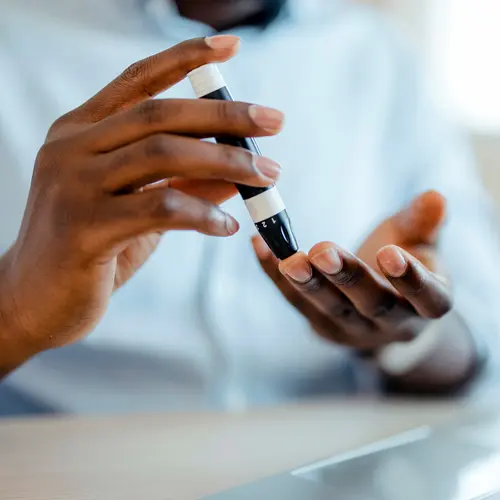A healthy lifestyle and diabetes pills are often all you need to manage your blood sugar if you have type 2 diabetes. But for some people, healthy habits and oral medications might not work well enough. If this happens, your doctor may recommend adding a medicine you inject to your treatment plan. Here’s what you’ll need to know.
Insulin vs. Non-Insulin Meds
If your body still makes some insulin, your doctor may try a non-insulin medicine first. There are two types. Most keep food in your stomach longer and help your pancreas release insulin when you eat. Some also help with weight loss. You and your doctor will pick one based on your blood sugar level, lifestyle, and cost.
Supplies You Need
You inject diabetes medicine in one of two main ways.
Syringe. This is a hollow needle connected to a chamber with a plunger. You draw up the amount of medicine you need from a vial and insert the needle into your skin.
Pen. This device looks just like it sounds. But instead of ink, it contains diabetes medicine. Many pens are prefilled. You attach a needle, dial your dose, and inject. Pens are easier to use than syringes and there’s less chance to make a mistake. They also use smaller needles. One drawback: Pens usually cost more than a vial of insulin, and insurance may not cover them.
Whichever you use, always have enough pens or syringes, needles, and alcohol wipes on hand. You also need a sharps container for used needles. When it’s full, drop it off at your doctor’s office, drug store, or local waste collection site. Don’t toss it out in your regular trash.
Setting a Routine
It’s tough to start something new. Even one new med can throw you off. Here’s how to get back on track.
Non-insulin meds. You inject some non-insulin meds once or twice a day, usually around the time you take your diabetes pills. Put a sticky note on the pill bottle to remind you. Some non-insulin shots are just once a week. A weekly shot’s easy to do but also easy to forget. Pick a day you’re likely to remember, such as when you play soccer or watch your favorite show. Then mark it on your calendar or put a reminder on your phone. It’s important to have your shot on the same day each week.
Insulin. If you use insulin, oftentimes you take it once a day. You may need it more often. You can take insulin so it starts to work when sugar from your food enters your bloodstream. Your diabetes educator can help set up a schedule that works for you.
What to Expect
As with many other diabetes medications, you might have side effects like nausea, vomiting, diarrhea, and low blood sugar. If you suspect your blood sugar levels are too low, check it with a blood glucose meter. If it’s under 70 mg/dL, treat it right away by eating 15 grams of carbohydrates, such as a tablespoon of sugar, and recheck after 15 minutes.
Many of the noninsulin injectable medications can slightly raise your risk of thyroid tumors and inflammation of your pancreas. Be sure you know the side effects of all your meds and when to call your doctor.
Tips for the Shots
Giving yourself a shot can take some getting used to. But it’s simpler than you might think, and it can become routine, like brushing your teeth. Some helpful hints:
Learn from a pro. Your diabetes educator will show you the best way to give yourself a shot. You can even practice on a dummy to make sure you’ve got it right.
Pick the right spot. You inject diabetes medicine just below your skin, usually in your belly, thighs, or backs of your arms. It can help to numb the spot with an ice cube or numbing cream.
Soothe yourself. If you feel anxious about giving yourself shots, take a few deep breaths or listen to music.
Take cover. Talk to your nurse educator about a needle shield. This handy little device hides the needle so you don’t see it.

